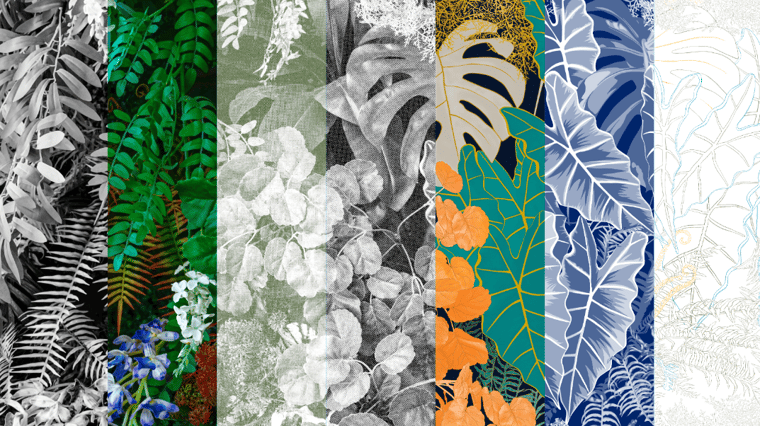To translate complex designs into fabric prints of the highest quality, operators and printing managers must select the correct type of rotary screen. In this article, we explain the essential considerations when selecting rotary printing screens.
Understanding rotary screen specifications
Selecting the right screen involves an understanding of various screen specifications.
- Resolution / mesh: The higher the mesh count, the finer the print quality. While many rotary printers use 125 mesh screens, you will need a screen with a higher resolution and a better raster for replicating intricate designs like geometrical shapes, micro designs, and halftones.
- Screen thickness: Thicker screens tend to be more durable, resisting damage and prolonging their lifespan. However, the trade-off can be a reduction in printing speed.
- Open area: The open area describes the percentage of the screen that is open, dictating how much ink can pass through. This defines how fast a printing process is and the depth of color. For example, a high open area suits designs requiring deep color tones, while a lower open area is preferred for surface printing.
- Dam shape: Not all screens are created equal. The process of screen making offers possibilities to shape the dams of the raster. For example, these dam shapes can be more conical, which allows for better paste flow with less squeegee pressure, giving much better control during printing (see our NovaScreen technology). Our latest screen technology, the OrtaScreen, improves the paste flow even more with its 3-dimensional dam shapes.

Operators must understand all these elements when selecting the correct screen. Finding the right balance between speed, cost, and quality is critical. For example: is a design prone to have moire effects? Choose a screen with a raster that does not interfere with the artwork. Are sharp lines essential for your designs? In that case, the screen resolution and dam shapes become more important.
Recommended rotary screen selection for varied designs
The variety of designs you can bring to life with rotary screen printing is astonishing. Here are some typical graphic interpretations and the most suitable rotary screen specifications:
1. Halftone designs (1 color):Printing halftones for fashion or home décor requires a higher resolution screen (around 165 or 195 mesh), correct engraving curve, and a grid that doesn't interfere with the design or substrate. These screens help overcome common halftone printing challenges like the moiré effect, visible dots, and color tone inconsistencies.
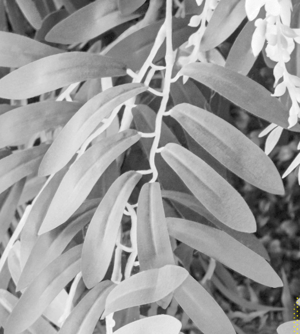
Even though most of the photo realistic designs are nowadays printed digitally, it is possible to print photo realistic designs CMYK+ printing. This require a screen that can handle high-resolution files and the right separation knowledge and skills. This knowledge is especially crucial when the file is enlarged, as it can lower the resolution, affecting the edge sharpness and definition of the final print.
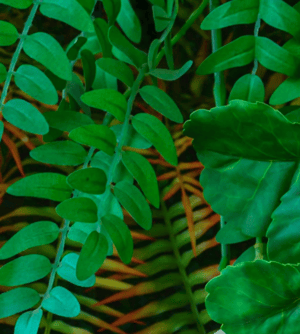
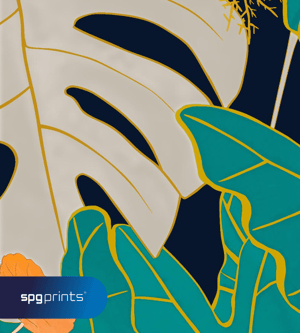
4. 4 halftone color design: Traditionally you print 1 tone per screen. But by using half tones you can realize many tones within the same screen, sometimes up to 7 tones! The success depends on the screen, the raster setting and production calibration of the engraving process.
The process calibrates the correlation between tones and raster dot sizes. The result is that a 50% tone in a design leads to an equal 50% tone depth after printing. This enables you to achieve the widest tone reach. By using this technique, you also reduce the number of screens and positions on the machines used, which is a welcome economic benefit. The screens can be supplied with the correct raster setting by SPGPrints, and we are happy to advise on optimizing the calibration.
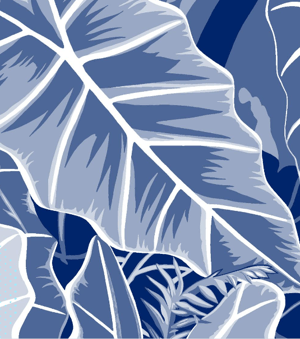
5. 2 outline color design (contouring): In this design, the artwork shows only outlines. Where in most cases, outlines are printed in black, the outline here is used as a design element - by taking two screens to create three different colors: The two original colors (blue and yellow) and one overlapping color (green).
Perfect fitting, a perfectly round screen and control of the printing process are crucial for the success of this artwork. Nowadays, printing a true color file is quite easy with digital printing. However, adding value is also in the designers' creativity and the printing managers' expertise. SPGPrints can support that by offering solutions and knowledge covering the whole process - from artwork to printed fabric - and we are happy to assist you in taking the next steps.
.png?width=300&height=333&name=rotary%20screen%20selection%202%20outline%20color%20design%20(contouring).png)
6. Tactile (3D) printing: This technique, often used in the wallpaper industry, is making its way into textiles. Rotary screens for tactile printing require a thicker lacquer to allow for 3-dimensional prints. This screen is not yet commercially available, but ongoing developments show great promise – and it will soon be a possibility.
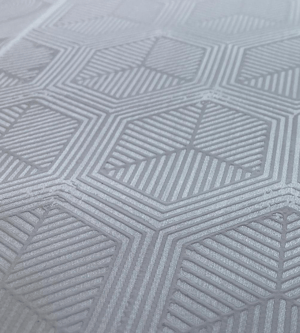
Make well-considered rotary screen printing decisions
A well-planned rotary screen strategy is critical for success in textile printing. Understanding the specifications of rotary screens and how they impact the final print quality is essential to replicating your customers' designs at high-quality levels.
Using the right screen, you can bring a broad range of designs to life. But achieving unrivaled print quality isn't just about the design and the screen; it's about having complete control over the entire printing process – from design to machinery, engraving, and textiles.
The best screen for your rotary screen printing challenges
SPGPrints is a partner to textile printing businesses across the world. We use our expertise, insight, and knowledge gained through decades to help you select the perfect screen for every textile printing job. We remain at the forefront of innovation in the textile printing industry and can work with you to help you harness the power of new print techniques and technologies.
Do you want more tips and tricks on how to select the right screen for your textile printing challenge? To help you in the process of rotary screen selection, we have created a detailed comparison guide:
Or request a one-on-one with our rotary screen printing specialists. Together we will find the solution that best matches your textile printing requirements.
